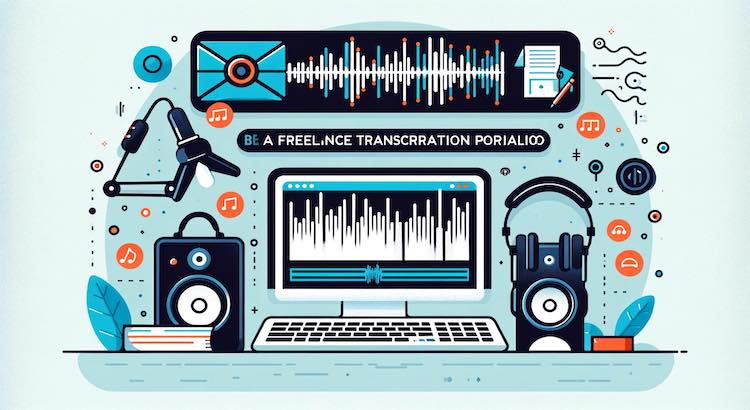How to Build a Compelling Portfolio as a Freelance Transcriptionist
Your portfolio is your key to attracting new clients as a freelance transcriptionist. It tells clients about your skills, reliability, and what makes you stand out. With a portfolio, you show evidence of your work and professionalism, which is important in today’s competitive market. This guide gives you easy steps to build an effective transcription portfolio.
Why a Strong Portfolio Matters
Clients often review portfolios before making hiring decisions. Up to 73% of freelancers say a clear portfolio helps them win new projects (Freelancers Union, 2022). A great portfolio:
- Shows your skills and specialties
- Builds trust with potential clients
- Makes you memorable among other freelancers
- Lets clients see past results
Step-by-Step Guide: Building Your Freelance Transcription Portfolio
Start with a Short, Strong Introduction
Your introduction should focus on three main things:
- Who you are
- Your transcription experience
- Your specific expertise (such as legal, medical, or general transcription)
Mention any related certifications or training to give extra confidence to your clients.
Highlight Core Transcription Skills
Transcription is about more than fast typing. Show you are skilled at:
- Listening for accuracy
- Following grammar and punctuation rules
- Handling technical language or multiple speakers
- Working with poor audio quality or background noise
Consider sharing brief project examples or case studies to demonstrate these skills.
- Did you transcribe a legal interview with technical terms?
- Have you worked on noisy recordings?
If you have not done paid work yet, try transcribing clips from podcasts or public debates, then include those samples in your portfolio.
Showcase a Variety of Projects
Diversity makes you more appealing. Include different types of samples, such as:
- Interview transcripts
- Podcast or lecture transcriptions
- Legal or medical documents
- Project summaries for businesses
If you are bound by confidentiality, create mock transcripts from public or royalty-free audio materials.
Include Client Testimonials and Reviews
Positive feedback builds trust. With client permission, add quotes or short reviews that highlight:
- Your accuracy
- Communications skills
- On-time delivery
No client reviews yet? Offer transcription samples for free or at a discount to receive honest feedback for your portfolio.
Describe Your Transcription Process
Clients want to understand your workflow. Be transparent by describing how you:
- Receive and organize files
- Transcribe audio using specific automated transcription tools or software
- Proofread for accuracy with proofreading services
- Deliver clean, final transcripts
- Keep client data confidential
Mention your typical turnaround times so clients know what to expect.
Offer Clear Contact Methods
Make it easy for clients to reach you. Your portfolio should include:
- Professional email address
- Contact form
- Links to business-focused social media profiles
Consider adding a FAQ section. Address common questions, like transcription pricing or turnaround speed, to reduce friction in client communication.
Keep Your Portfolio Updated
Outdated portfolios can suggest you are not available. Regularly update your portfolio by adding:
- Recent samples and projects
- New client reviews
- Fresh certifications or skills
This shows clients you invest in your work and stay current with industry standards.
Pay Attention to Portfolio Design
Your portfolio should look professional and easy to use. Tips for a polished appearance:
- Use a simple, clear layout
- Organize samples by category or service
- Keep text easy to read, with lots of white space
- Choose high-contrast colors for accessibility
Not great at design? Try using platforms with ready-made templates or get inspiration from other top freelancers in your field.
Extra Ways to Make Your Portfolio Stand Out
- Add a section for closed caption services or subtitling services if you offer them.
- Highlight your experience with audio translation or text translation services to attract global clients.
- Link to your Order transcription or Order captions pages so clients can hire you directly.
- Share your transcription pricing and captioning rates to set expectations up front.
Conclusion: Let GoTranscript Help You Excel
Building a strong transcription portfolio is essential for freelance success. By showing your skills, diverse samples, and professionalism, you can earn the trust of clients and secure more projects. Remember, always update your portfolio as your skills grow and your experience broadens.
If you want support in creating and managing high-quality transcripts, GoTranscript offers reliable transcription services and advanced tools to help you shine as a freelance transcriptionist. Whether you need help with automated transcription or want to streamline your workflow with an AI transcription subscription, GoTranscript is here to help you stand out in the market.



















 Verified Order
Verified Order